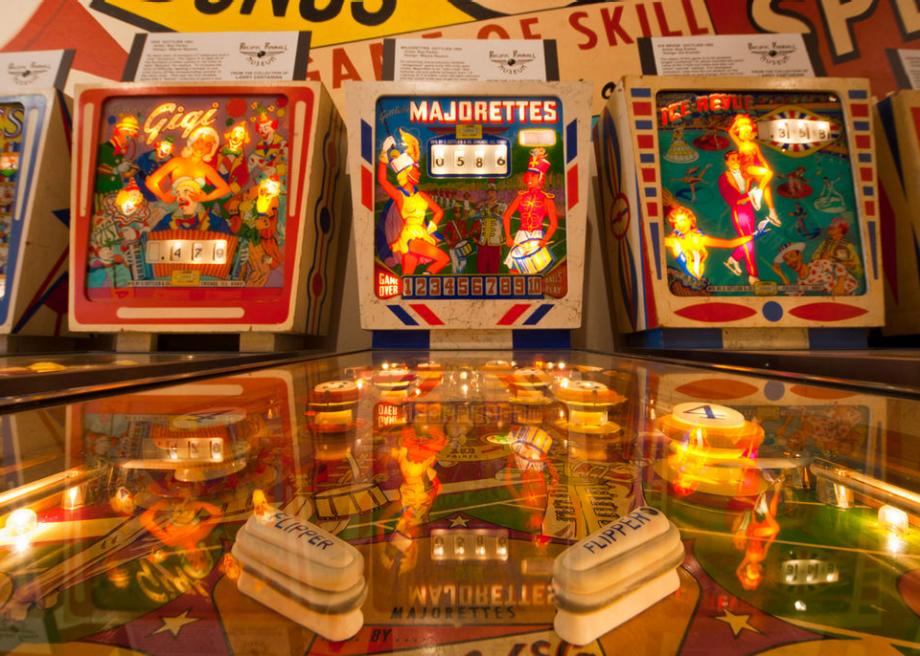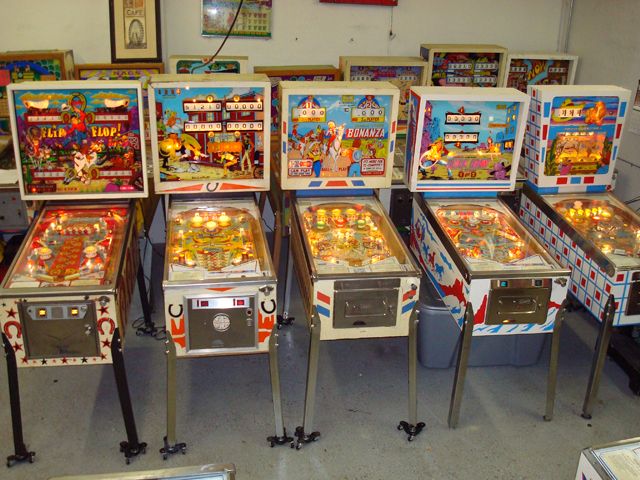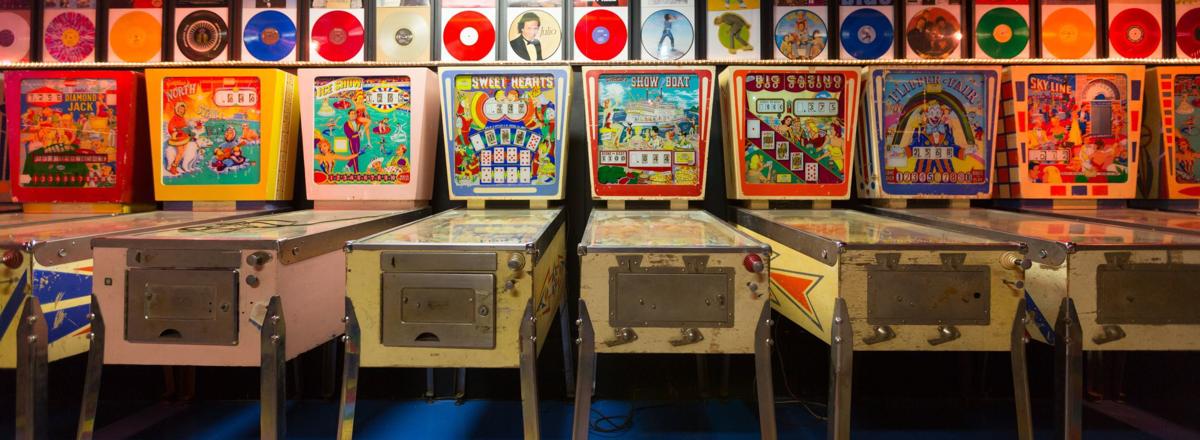Pinball machines are a great American art form. Commercially produced “low art” created in a collaborative effort (not unlike film) by electrical and mechanical engineers, designers and artists. Understanding the historical context that surrounds these pieces of Americana is important for the understanding of their value as part of American pop culture.

” Amusement pinball. As American as baseball and hot dogs”.
– Vintage Gottlieb Tagline
When approaching vintage artforms such as pinball machines it’s important to understand the context in which it was created.
It’s like walking into a flashy Las Vegas Peter Lik gallery and enjoying the large saturated metal landscape prints full of bright colors and sharp contrast under carefully considered lighting and then walking over to the art museum showing Ansel Adams black and white work and dismissing it because there is no color.
Similarly, it is hard to appreciate a vintage pinball machine from the 1950s placed next to a modern Stern machine with all of the music, sound effects, video screens and computer-controlled lights.

One appeals to the sensibilities and expectations of someone in the 1950s while the other appeals to a modern person who has experience everything available in modern times.
Specific to artwork, context consists of all of the things about the artwork that might have influenced the artwork or the maker (artist) but which are not actually part of the artwork. Contextual information can deepen and/or improve our understanding of an artwork.

To truly appreciate a vintage pinball machine, one needs to transport themselves back to the time the machine was created.
Understanding what entertainment options were available at the time, who would be playing the machine, where would it be located, who the intended customer was, what other coin-op machines would be competing for the customer’s attention, how much that dime or quarter represented in the average person’s entertainment budget.

Men playing pinball at the Union, 1971
Understanding the competitive landscape at the time is important also. Who were the manufacturers at the time, what kinds of machines were being released, what came before and what features were new at the time.
All of this information furthers the appreciation of the individual example from the era.

Since pinball machines and other coin-op devices were commercial products designed to make money for the operator in exchange for a few minutes of entertainment value for the user, successful machines provided a fair exchange at the times.
A modern player might not see the value of the gameplay in the modern context and dismiss it as inferior to modern machines without putting the device in the proper context.

Consider that vintage machines that did not provide the right amount of entertainment to match the expectations of value for the times were unsuccessful and operators would not purchase them or have them in their establishments. So manufacturers were striving to match the current level of expectation. How long that value lasted depended on whatever machines were released in the future.

Deeper levels of appreciation can be achieved by understanding the artists behind the machines. A pinball machine is a bit of theater in a box. A collaboration between designers, engineers, and artists. Each compromise and contributes to the overall success of the final product. Understanding the mechanics and technology behind of the machine as well as the gameplay and artwork all contribute to a greater understanding of the whole vintage art form.

This brings us to the presentation of vintage pinball machines. Placing a vintage pinball machine next to a modern pinball machine provides an unfair and out-of-context comparison. A better arrangement would be to place vintage pinball machines of the same era together or with other entertainment options from the time period such as fortune-telling machines, strength testers, jukeboxes or photo booths.

Art has the ability to stand on its own with little need for description or explanation. It can have a profound impact on the viewer, who interacts with the artwork in the context of his or her own experiences. But while art has this ability, how much more powerful is it when you understand the story behind the piece?
Curating an art collection within its context allows for a unified experience for the viewer. Whether you’re in public, an office or a hotel, understanding the broader context gives new meaning to pieces that can begin to speak to one another and play off of the larger story of the space.
https://ninedotarts.com/importance-context-art-collections/
The way context is presented can change as time progresses and the viewers lose their ability to relate to the time period of the pieces. If you consider a trip to Graceland the home of Elvis Presley. Elvis died in 1977. Graceland is basically a home frozen in time.

Visitors to Graceland in the 80s would have still remembered Elvis when he was alive and perhaps grew up with some of the objects in the home. They have familiarity with the wallpaper, flooring, furniture styles. They recall the historic events, what was on TV, what was on the radio. They have a nostalgic connection to the era..
Visitors in 2020+ perhaps need more education on the time period as they have little connection to the time period. A good museum or collection experience provides enough context and information to help transport the modern visitor back to that time period.
Displaying a collection of pinball machines should similarly take into account context. A vintage pinball machine should not be compared to a modern pinball machine by the gameplay experience from a modern perspective. It should be appreciated for its ability to transport one’s self back to an earlier time period.

If one allows themselves to take in all of the elements that brought the machine to life, the vintage pinball machine can be a time machine to a simpler time.
